Luxurious Food and The Ultimate Pairings at Michelin-Starred Restaurants in Japan: Kojyu
by Kyoko Nakayama
@ 02 Jan 2018
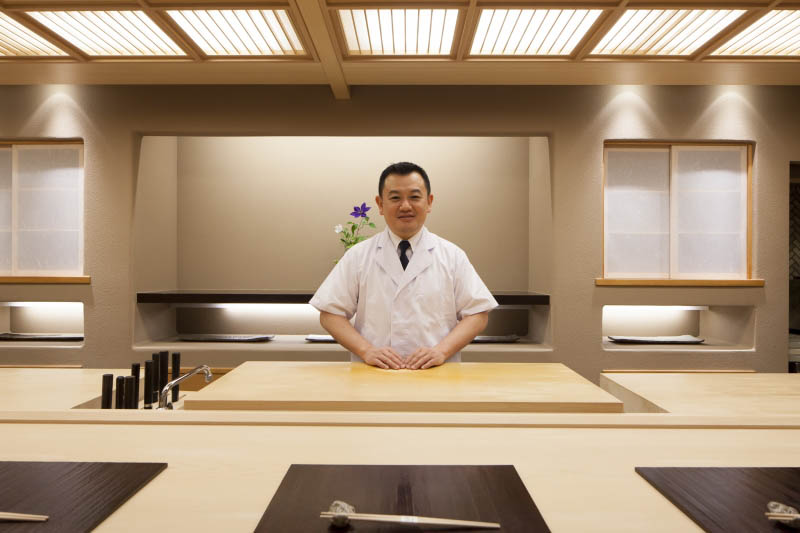 Chef Toru Okuda:
Chef Toru Okuda:
Japanese cuisine is all about seasonality, and Kaiseki is based on Japanese tea ceremony. Sennorikyu is the person who started the tradition of tea ceremony. I would like to make dishes that can be approved by him. Kaiseki need to reflect the seasons. Not only using seasonal ingredients, we change the tableware, picture on the wall, even service staff’s kimono seasonally. Because the cuisine is not only food, but also our culture and history, that we have been succeeded from our ancestors. We have to pass this tradition to our descendant in right way.
Some people use foreign ingredients for Kaiseki, but I won’t. I think Japanese “terroir” need to be expressed with Japanese produces.
Nowadays, there are so many types of culinary equipment. Even though, I only use classic one, modern equipment is just an alternative of authentic way. Cuisine needs to be natural and created by hands, not by machine, I believe.
I have a branch in Paris and am planning to open new branch in NY. But still, what I make is authentic Japanese Kaiseki, so I don’t adopt the local people’s palate. I would like to bring the authentic flavor and culture in Japan as much as possible.
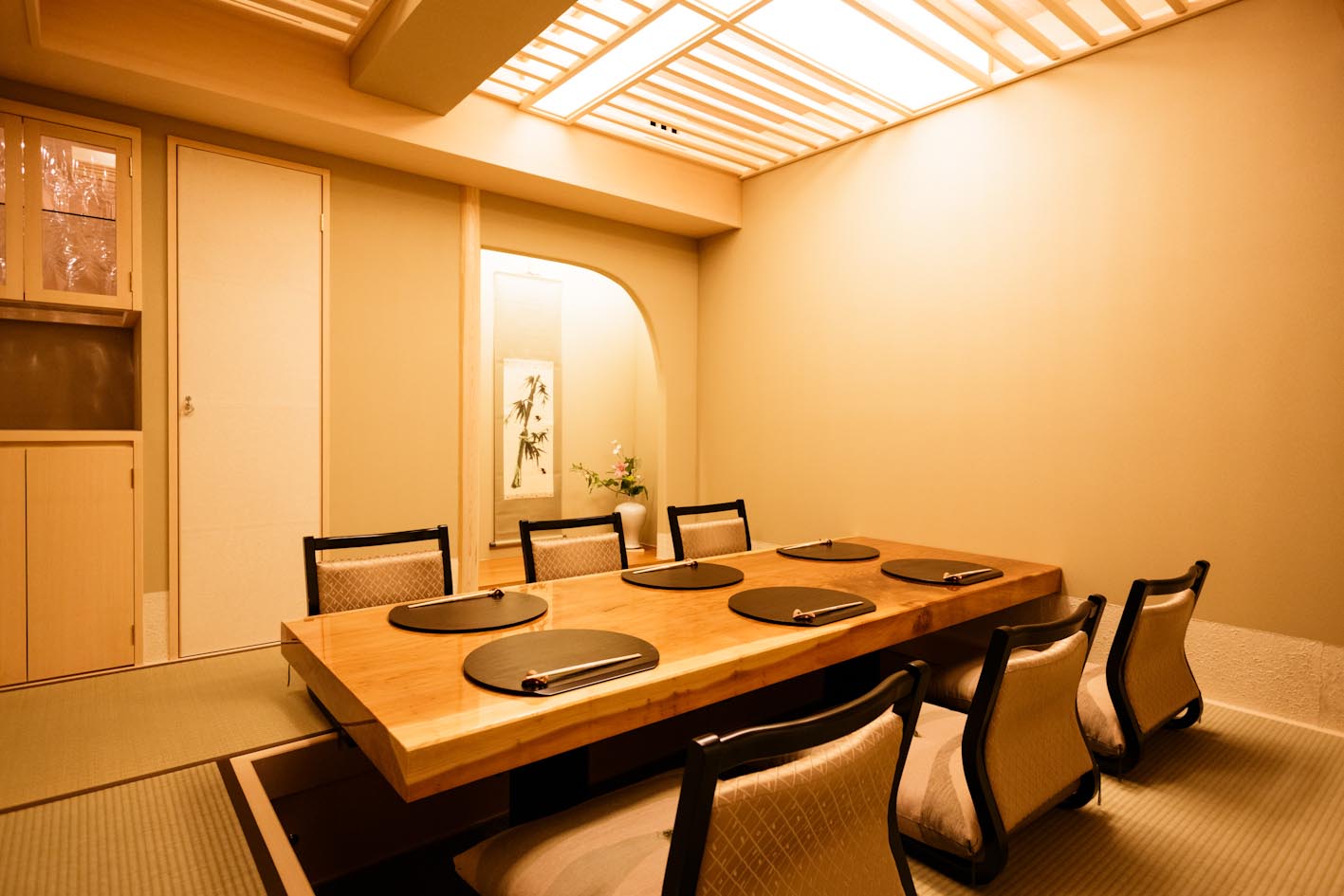
Lotus leaf plate
This cold appetizer is plated on a lotus leaf. This plating reflects the cultural background in Japan. The lotus leaf is symbol of Buddhism, and now is the timing to welcome our ancestors’ spirit, that’s why Chef Okuda uses the lotus leaf as a plate and used lotus root and petal on top of it. Main ingredients are Japanese seafood. The outstanding ingredient is Japanese seasonal delicacy, Hamo. It is very boney so only the skillful chef can cut its bone. Hamo comes with “Kurumaebi” prawn, and seasonal vegetables, such as lady’s finger, edamame, and grazed with clear tomato jelly using Japanese citrus, yuzu and sudachi.
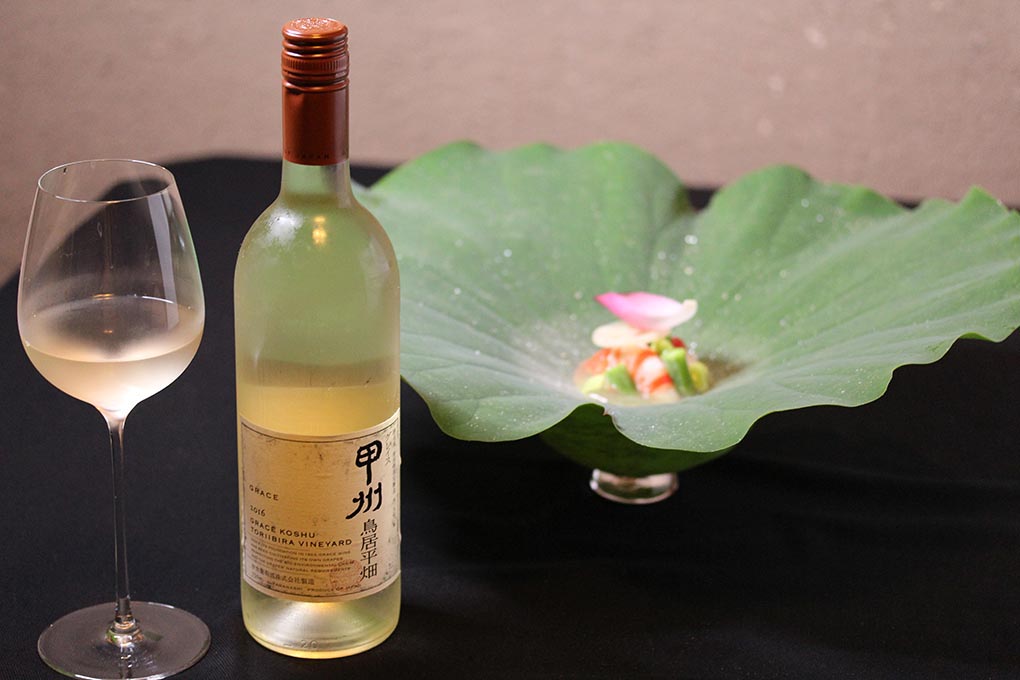 Pairing: Koshu Toriibira vineyard Grace Wine
Pairing: Koshu Toriibira vineyard Grace Wine
Toriibira is located in Katsunuma, one of the oldest grape growing places since 8 centuries, and Koshu is the original native specie from the area. It has pure fruity flavor, citrus aroma and acidity, which match the seafood and also tomato jelly.
Purple sea urchin on its shell
Not only four seasons, Kaiseki chefs express the seasons in between. We call it “deai”, meet up in Japanese, because two seasons meet each other. In this time, chef Okuda express the season in between summer and autumn. Under the purple sea urchin, there are corn “surinagashi”, potage using Japanese dashi, roasted ginkgo nuts, and roasted eggplant with dashi jelly. Sea urchin and corn are summer ingredients, and ginkgo nuts and eggplants represent autumn. Japanese appreciate the changes the previous season is fading away and new season is slowly coming up. The texture of sea urchin is just as soft as the eggplant, and sweetness of the corn enhances sweetness of sea urchin. It was plated with cool glass plate, shaved ice, and green Japanese maple leaf.
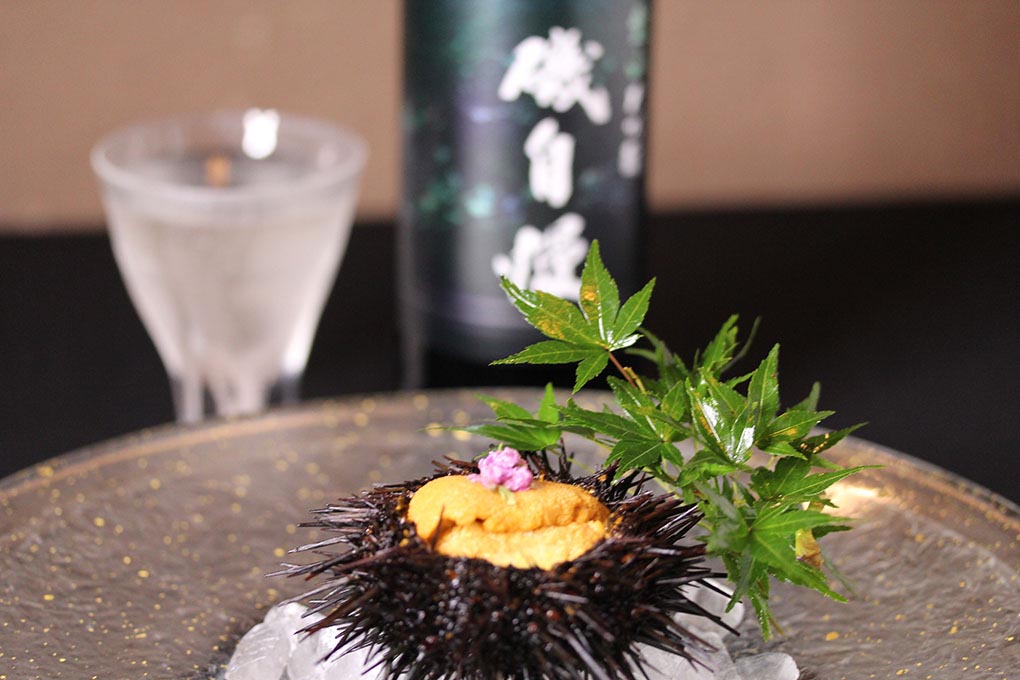 Pairing: Isojiman Daiginjyo Aiyama
Pairing: Isojiman Daiginjyo Aiyama
Made with very precious premium grade Aiyama rice, This sake is compatible dryness and firm body, rich in umami and fruity aroma like melon. Dryness brings out the roundness of sea urchin and umami gives additional push to the natural sweetness.
Charcoal grilled Ozaki beef sirloin, Kamo eggplant, Manganji pepper, topped with red miso
Premium Ozaki beef is raised by the ranch owner, Mr.Ozaki, in Miyazaki prefecture, and grilled with charcoal. Kamo eggplant and Manganji pepper are traditional vegetables from Kyoto. Bitterness from the eggplant and the spiciness from pepper lighten the fatty part of the beef. Red miso enhances the umami of red meat part. Even the beef is highly marbled, Ozaki beef’s fat melt in very low temperature, so it won’t be heavy on your stomach.
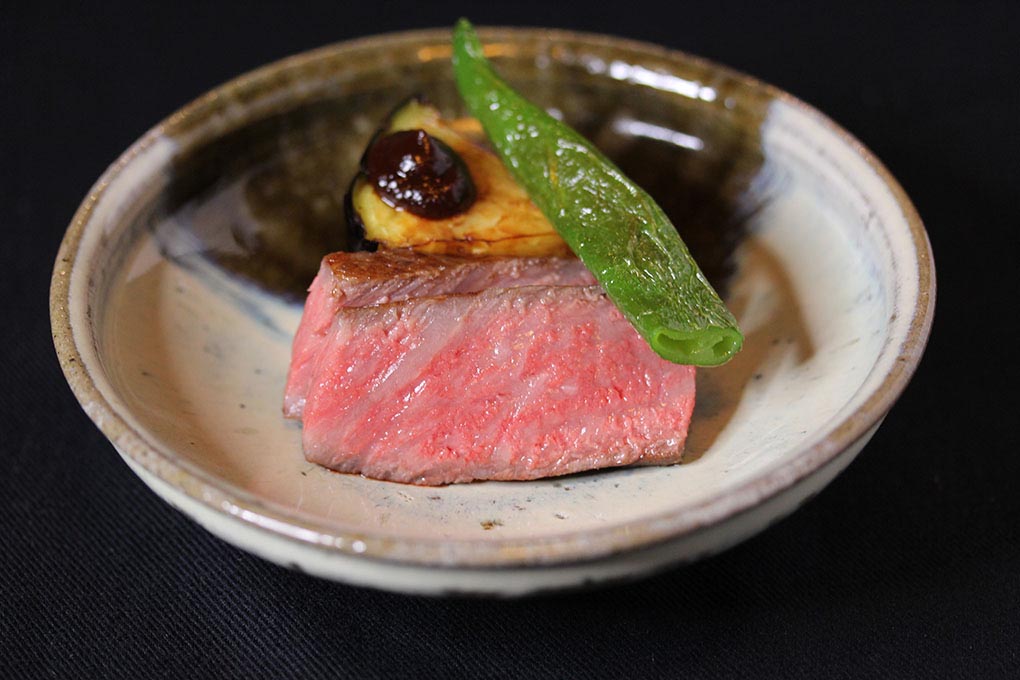 Pairing: Les Rouliers Domaine Henri Bonneau
Pairing: Les Rouliers Domaine Henri Bonneau
Usually beef is paired with red wine contains lots of tannin, but this pairing is more focus on the concentrated fruitiness from the grape.
This French red wine made from Grenache is very fruity and amplify umami of red meat part.
 Charcoal grilled Ayu
Charcoal grilled Ayu
Using the traditional knowledge of charcoal grill, ayu (sweetfish) is slowly grilled for 45 minutes by a far-infrared ray from the Bincho charcoal. The chef would like to bring out the best flavor of respective parts of ayu. Without using any oil, head is crispy because he grills it heads down, so the oil which comes from the meat go down and it is cooked as if it was deep fried. The belly part is like “Himono”, traditional semi dried fish, so have the moisture and concentrated umami. Compare to normal grilled ayu, his one is more fragrant and crispy.
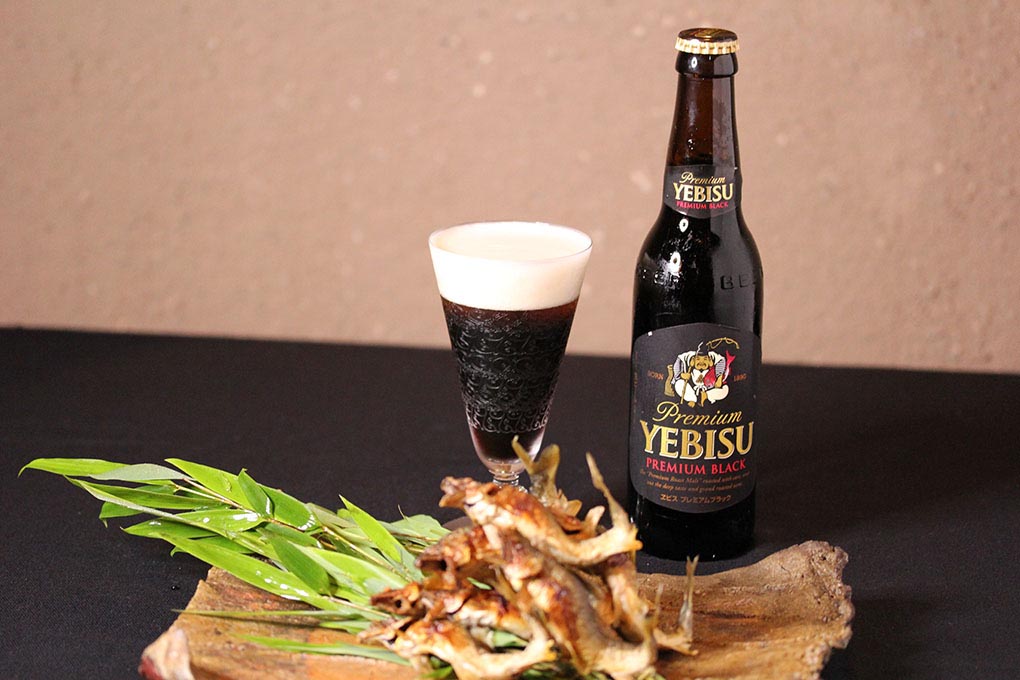 Pairing: Yebisu premium black
Pairing: Yebisu premium black
Because ayu is crispy grilled, it takes moisture of the mouth. That’s why it paired with the beer. This beer took 1.5 times longer aging time for round flavor, and for long lasting tails, the beer maker added hops two times. The bitterness of hop synchronizes with the one from ayu, the aftertaste is slightly sweet, because of the sweetness from the malt.
It has well-balanced aroma and bitterness, the rich roundness raise up the umami of ayu.

Visit their website at:
http://www.kojyu.jp/
 Chef Toru Okuda:
Chef Toru Okuda:





